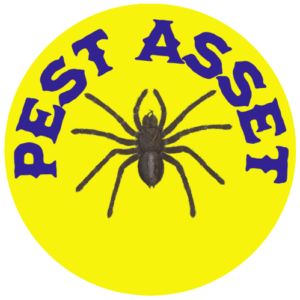Ants may seem like harmless little critters, but when they invade your home, they can quickly become a major nuisance. Their intricate colonies, relentless foraging, and ability to squeeze through seemingly impossible cracks can turn a peaceful home into a battleground. But fear not! This comprehensive guide will equip you with the knowledge and strategies to banish these tiny terrors from your domain.
Understanding the Ant Kingdom
Did you know there are over 12,000 ant species worldwide? From the minuscule Pharaoh ant to the mighty carpenter ant, these fascinating insects exhibit incredible diversity in size, appearance, and behavior. Their complex social structures and intricate communication methods are as captivating as they are effective. Understanding these intricacies is key to outsmarting them.
The Anatomy of an Ant
To truly combat an enemy, you must know its strengths and weaknesses. The typical ant boasts three distinct body parts:
- Head: Houses the brain, eyes, and powerful mandibles
- Thorax: Supports the legs and, in some species, wings
- Abdomen: Contains vital organs and the stinger (in certain species)
Six nimble legs propel them across your floors, while their antennae act as sophisticated sensory tools. Some species even sprout wings for short-lived flights during their reproductive phase – a testament to their adaptability.
For more detailed information on ant anatomy, check out this comprehensive guide from the University of Florida.
The Power of the Colony
Ants are masters of teamwork. Their highly organized colonies operate like miniature societies, with each member playing a vital role:
- Queen: The heart of the colony, focused solely on reproduction
- Drones: Male ants with the fleeting duty of mating with the queen
- Workers: The true backbone of the colony – tireless females that forage for food, care for the young, and defend the nest with unwavering determination
This complex social structure makes ants incredibly resilient and difficult to eradicate without professional help.
Common Ant Problems: Why They Invade Your Space
Understanding what attracts ants is the first step to preventing their unwelcome arrival. Here are some of the most common reasons for ant infestations:
- Food sources: Crumbs, spills, and unsealed food containers are like neon signs screaming “Welcome!” to these opportunistic foragers.
- Shelter: Ants seek comfort in your home, looking for potential nesting sites in cracks, gaps, and moist areas near plumbing.
- Water: Like all living creatures, ants need water to survive. Leaky pipes, pet water bowls, and even small puddles can attract them.
- Warmth: During colder months, ants may seek refuge in the warm confines of your home.
Remember, even the tiniest opening can be an ant’s grand entrance. A crack as small as 1/64 inch is enough for some ant species to squeeze through!
Strategies for an Ant-Free Future
Now comes the sweet revenge! Here’s how to turn the tables on these tiny trespassers:
1. Cleanliness is Key
Regular sweeping, vacuuming, and wiping down surfaces will eliminate the food sources that entice ants. Remember, even a single crumb can be a feast for their colony. Pay special attention to:
- Kitchen counters and floors
- Dining areas
- Pet feeding stations
- Trash and recycling bins
2. Store Food Wisely
Seal all food containers tightly, especially sweets and sugary treats that are irresistible to ant taste buds. Consider using airtight containers or storing susceptible items in the refrigerator.
3. Seal Entry Points
Inspect your property for potential entry points and seal them with caulk, weather stripping, or sturdy screens. Common areas to check include:
- Window and door frames
- Utility line entrances
- Foundation cracks
- Gaps around pipes and vents
Every blocked crack is a victory against the ant army!
4. Natural Repellents
Certain scents can deter ants from entering your home. Try these natural solutions:
- Peppermint oil
- White vinegar
- Cinnamon
- Lemon juice
Deploy these fragrant weapons strategically to create an unwelcome environment for your unwanted guests. For more natural ant control methods, visit the National Pesticide Information Center’s guide.
5. Maintain Your Yard
Don’t forget about outdoor ant prevention:
- Keep trees and shrubs trimmed away from your home
- Remove piles of wood, leaves, or debris near the foundation
- Fix leaky outdoor faucets and ensure proper drainage
6. Professional Help: When to Call the Experts
For severe infestations or when DIY solutions fall short, don’t hesitate to call in the experts. Professional pest control services like Pest Asset have the tools, knowledge, and experience to effectively eradicate ant colonies and prevent their return.
Signs you may need professional help include:
- Multiple ant colonies or species present
- Structural damage (especially with carpenter ants)
- Recurring infestations despite your best efforts
- Ants in sensitive areas like electrical boxes
Victory is Yours!
By understanding ant behavior, implementing preventative measures, and seeking professional help when needed, you can reclaim your home from the clutches of these tiny invaders. Remember, prevention is the ultimate weapon – a clean and well-maintained home is an ant-free haven.
Take Action Today!
Don’t let ants take over your home. If you’re facing a persistent ant problem or want to ensure your property is protected, contact Pest Asset today. Our experienced professionals will:
- Conduct a thorough inspection of your property
- Identify the specific ant species causing problems
- Develop a customized treatment plan
- Implement effective, eco-friendly solutions
- Provide ongoing prevention strategies
Take the first step towards an ant-free home. Call Pest Asset at (440) 363-6593 or visit our website pestasset.com to schedule your consultation.
Remember, when it comes to ant control, early intervention is key. Don’t wait until the problem escalates – contact Pest Asset and say goodbye to ant infestations once and for all!



